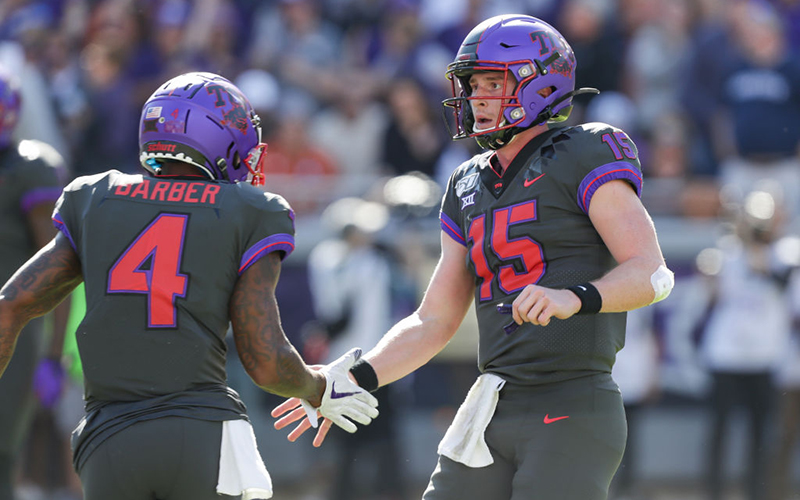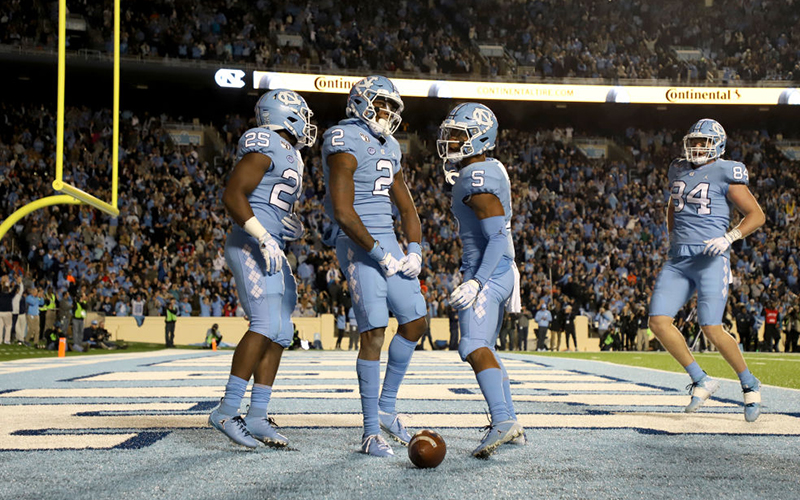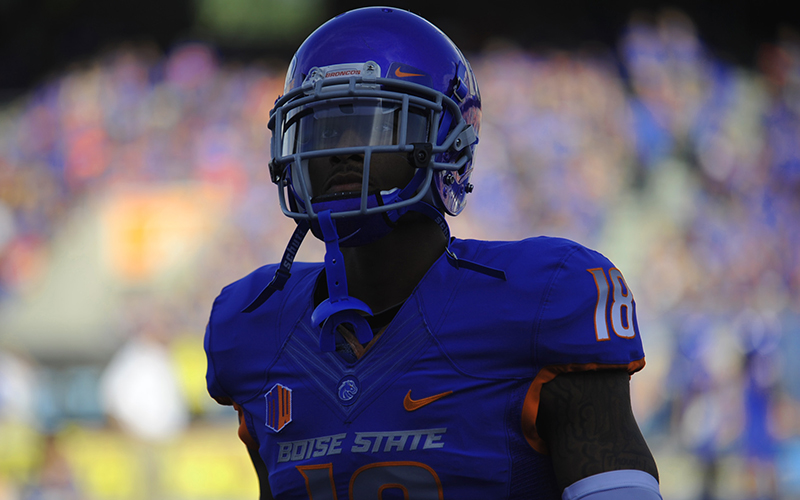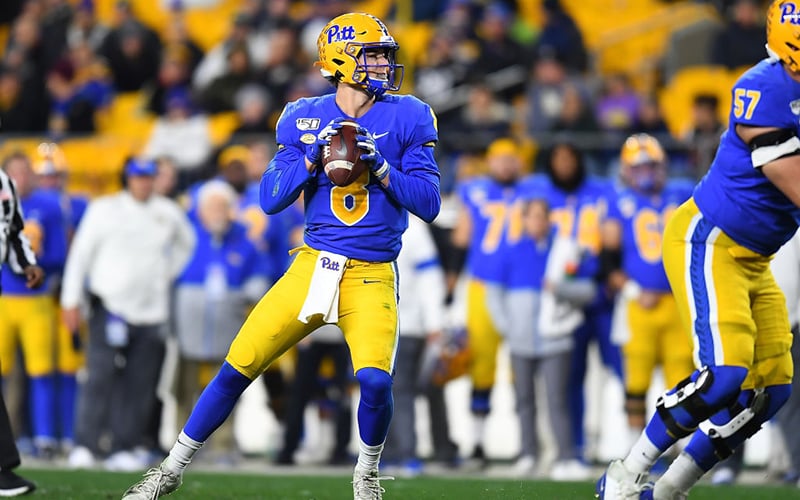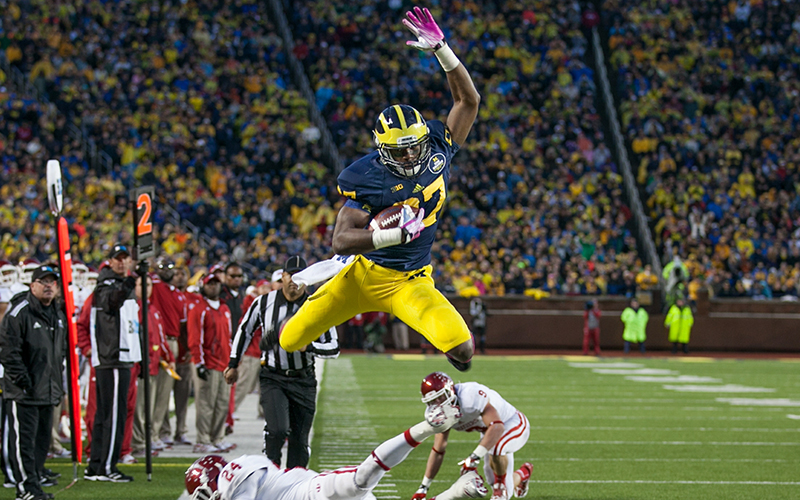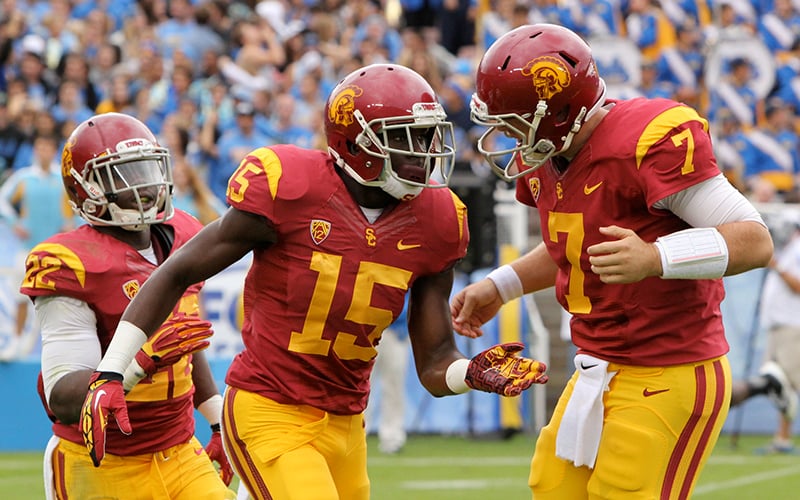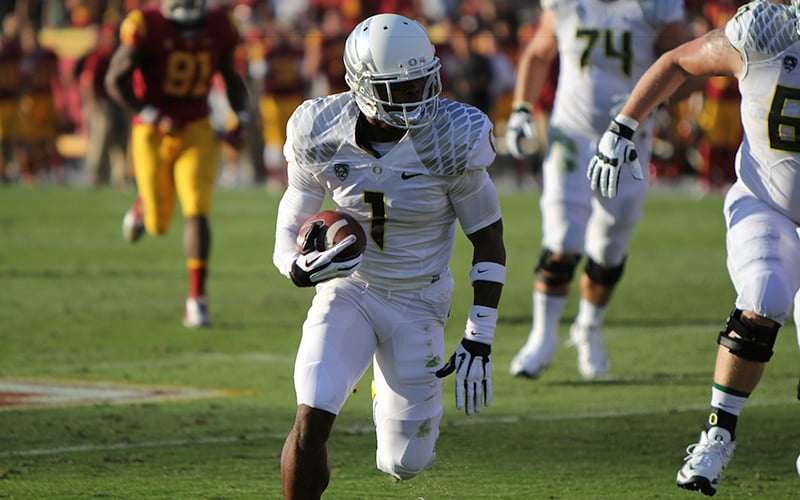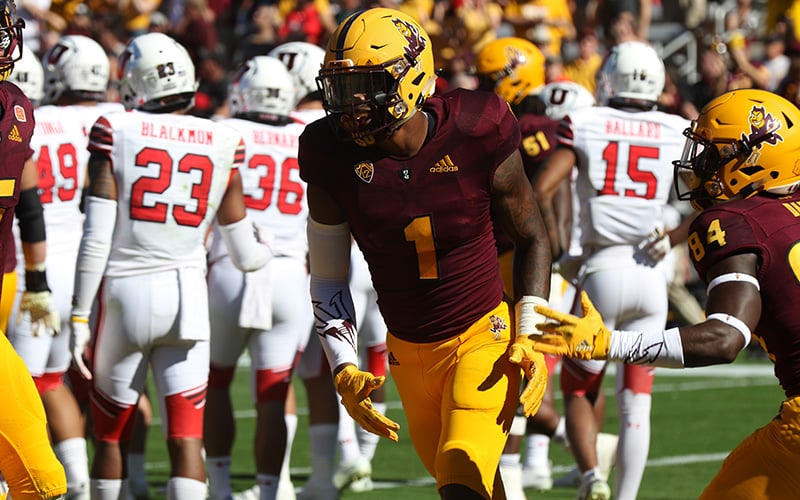
Many Arizona State fans say they like the team uniforms that feature the school’s traditional colors of maroon and gold, such as this one worn by wide receiver N’Keal Harry. (Photo by Bella Sisneros/Cronkite News)
LOS ANGELES – The 1995 Rose Bowl featured an Oregon Ducks team that hadn’t played in the storied Pac 12 title game in 37 years.
That improbable leap forward for the football program changed how the college football community saw their sport for years to come.
After the Ducks’ 1994-95 season, former Oregon track runner Phil Knight, a founder of Oregon-based Nike, got involved. Not only did he donate money to the school, he invested in making the football uniforms more exciting and attractive – not just for fans, but for recruits in high schools across the country.
The uniforms sported new logos, cleaner designs and an extensive wardrobe of alternate uniforms, some of which weren’t in Oregon’s school colors, yellow and green.
The school’s recruiting saw a lift, too. Since Knight got involved, the Ducks have gone to three more Rose Bowls (winning twice) and two National Championships, and they’ve won two Fiesta Bowls. Oregon football has been much better than it was before Nike’s drastic changes.
Today, Oregon has a new uniform combination every week, and these innovative threads are in the spotlight every Saturday. Many other teams have followed suit.
The University of Maryland has been collaborating on standout uniform schemes from Under Armour, which is headquartered in Maryland. The most notable change was incorporating the Maryland state flag into the design. Both Nike and Under Armour declined comment for this story.
Arizona State University has also been incorporating the state flag in uniforms for the past few years, taking the field each week with a new combo. Leading up to every game day, uniform reveals are huge for Sun Devil Nation, and the hype around college football uniforms is higher than ever in 2019, experts say.
Suited for success
Uniforms have become one of the many tools used in recruiting for college football teams. Oregon set the standard with multiple combinations because of its relationship with Phil Knight, co-founder of Nike, and other universities have followed suit. Here are some of the sport’s most popular uniforms.
Adam Gorney, a national recruiting analyst for Rivals, one of the top recruiting analysis sites, has been looking at the recruiting process both before and after the advent of these uniform changes. Uniforms have a substantial effect on recruits choosing which program to play for, he said.
“I think uniform combinations and having all of that kind of stuff is definitely one factor in many factors in recruiting,” Gorney said. “There’s a reason why when kids go on visits, the new big thing is to take photoshoots in all kinds of uniform combinations. It’s to sell those recruits, but also to kind of influence other kids who are scrolling through social media to kind of follow along.”
Previously, he said, visiting recruits would tour the university and its facilities, meet with representatives of the academic center and talk with the coaching staff. Then they’d choose the program best for them.
Social media and its attention to appearances, however, has changed that process, Gorney said.
“When kids are on campus now, it’s all about getting photoshoots done, hyping them up, and getting them interested and excited about the direction of the program and where it’s going,” he said.
The photoshoots, he said, “not only help with that kid, but they help with driving your social media presence online, where I notice maybe one big-time kid is on campus, and then many other elite recruits are commenting or liking on social media, and so they’re seeing that too and kind of want to be a part of it.”
Not every program has made the switch to these modern uniforms, however. In fact, several legacy programs have stuck with their traditional ways and seem to have no difficulty recruiting.
For instance, Alabama arguably is the best in the nation at recruiting, Penn State still does well and Oklahoma continues to attract top recruits. Despite the fact that, by today’s standards, these programs’ uniforms are “boring.”
Their history and iconicism give their threads respect. As Gorney said, they’re unlikely to accept the trend toward snazzy.
“In big games, you don’t see USC changing their uniforms,” he said. “Penn State had a throwback uniform a few weeks ago, and honestly, the fan base kind of resisted it and wasn’t too crazy about it. They wanted to go back to their old thing.”
Some coaches are conservative in trying to retain their program’s identity. The coaching staff will always play a role in this uniform preservation.
“I think it absolutely runs through the coaching staff,” Gorney said. “If Nike went to (Alabama coach) Nick Saban and said, ‘We’re going to put you in different color combinations,’ I think there would be tremendous resistance about that.”
Either way, for some recruits, uniforms are irrelevant.
“Even growing up as a kid, I didn’t really care what color the uniforms were, or what number I had,” said Chris Kluwe, a former UCLA punter. “It was just enough to be out on the field. I know a lot of guys do really like the style or the history, but for me it was always just being out on the field.”
Gorney understands that thinking. It’s about both what the school is interested in, as well as what the player is interested in.
“Some kids honestly care about that stuff, some kids don’t. Some kids want to always wear just a plain white helmet, with nothing written on it” like Penn State does, Gorney said. “That’s kind of what drives them and motivates them.”
“Some kids get super excited about wearing a different combination or seeing some sort of uniform reveal before a big game, and that gets them going. So it really is school-specific I think, but also player-specific, too, where some kids really care about it and some kids don’t.”
Social media is driving recruiting these days. For some football recruits, it means more than it does to others.
“I don’t think it’s necessarily right or wrong either way, it’s just people’s personal considerations,” said Kluwe, the former punter. “Ultimately, the only thing that matters as an athlete is, ‘Are you good enough to play when the lights are on?’
“So whatever gets you to that level – if having a hype-looking uniform gets you to that level where you feel like you perform at your best – then by all means that’s something you should care about. That’s something that’s important to you.”


